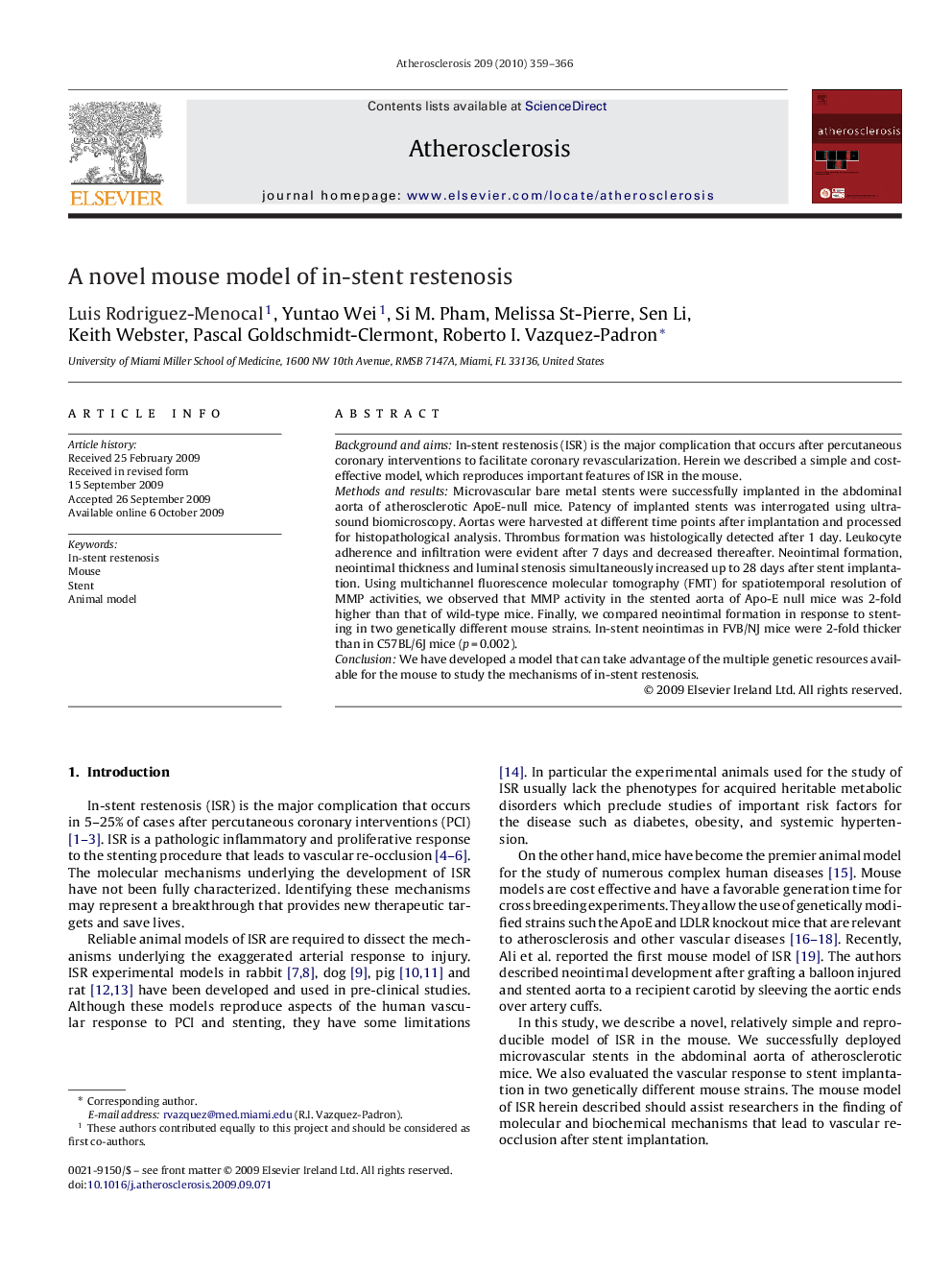| کد مقاله | کد نشریه | سال انتشار | مقاله انگلیسی | نسخه تمام متن |
|---|---|---|---|---|
| 2893217 | 1172409 | 2010 | 8 صفحه PDF | دانلود رایگان |

Background and aimsIn-stent restenosis (ISR) is the major complication that occurs after percutaneous coronary interventions to facilitate coronary revascularization. Herein we described a simple and cost-effective model, which reproduces important features of ISR in the mouse.Methods and resultsMicrovascular bare metal stents were successfully implanted in the abdominal aorta of atherosclerotic ApoE-null mice. Patency of implanted stents was interrogated using ultrasound biomicroscopy. Aortas were harvested at different time points after implantation and processed for histopathological analysis. Thrombus formation was histologically detected after 1 day. Leukocyte adherence and infiltration were evident after 7 days and decreased thereafter. Neointimal formation, neointimal thickness and luminal stenosis simultaneously increased up to 28 days after stent implantation. Using multichannel fluorescence molecular tomography (FMT) for spatiotemporal resolution of MMP activities, we observed that MMP activity in the stented aorta of Apo-E null mice was 2-fold higher than that of wild-type mice. Finally, we compared neointimal formation in response to stenting in two genetically different mouse strains. In-stent neointimas in FVB/NJ mice were 2-fold thicker than in C57BL/6J mice (p = 0.002).ConclusionWe have developed a model that can take advantage of the multiple genetic resources available for the mouse to study the mechanisms of in-stent restenosis.
Journal: Atherosclerosis - Volume 209, Issue 2, April 2010, Pages 359–366